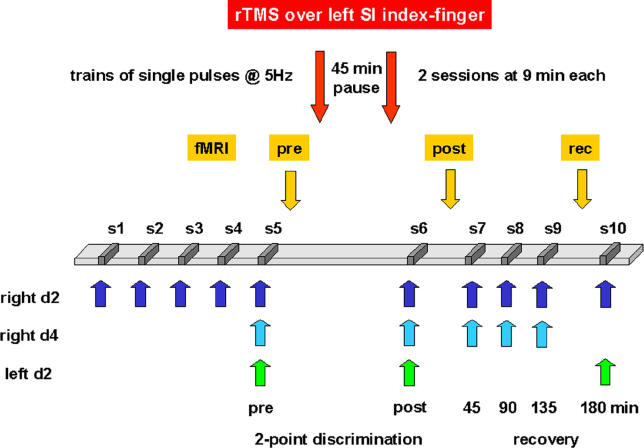Figure 1. Experimental Design.
S1–S5 served to create a stable discrimination performance for the right D2. D4 and the left index finger (D2), serving as controls to assess spatial specificity of the effects, were tested at session S5 (pre-rTMS), because task familiarization has been shown to generalize across fingers. After S5, pre-fMRI measurements were performed, then two rTMS sessions separated by 45 min were applied over the left cortical index finger representation in SI. After the termination of rTMS, in session S6 the post-rTMS condition was measured for both index fingers and the ring finger. Then post-fMRI measurements were repeated. S7–S10 served to assess the recovery of the rTMS-induced effects on thresholds. Recovery of BOLD signals was assessed 3 h after termination of rTMS.

